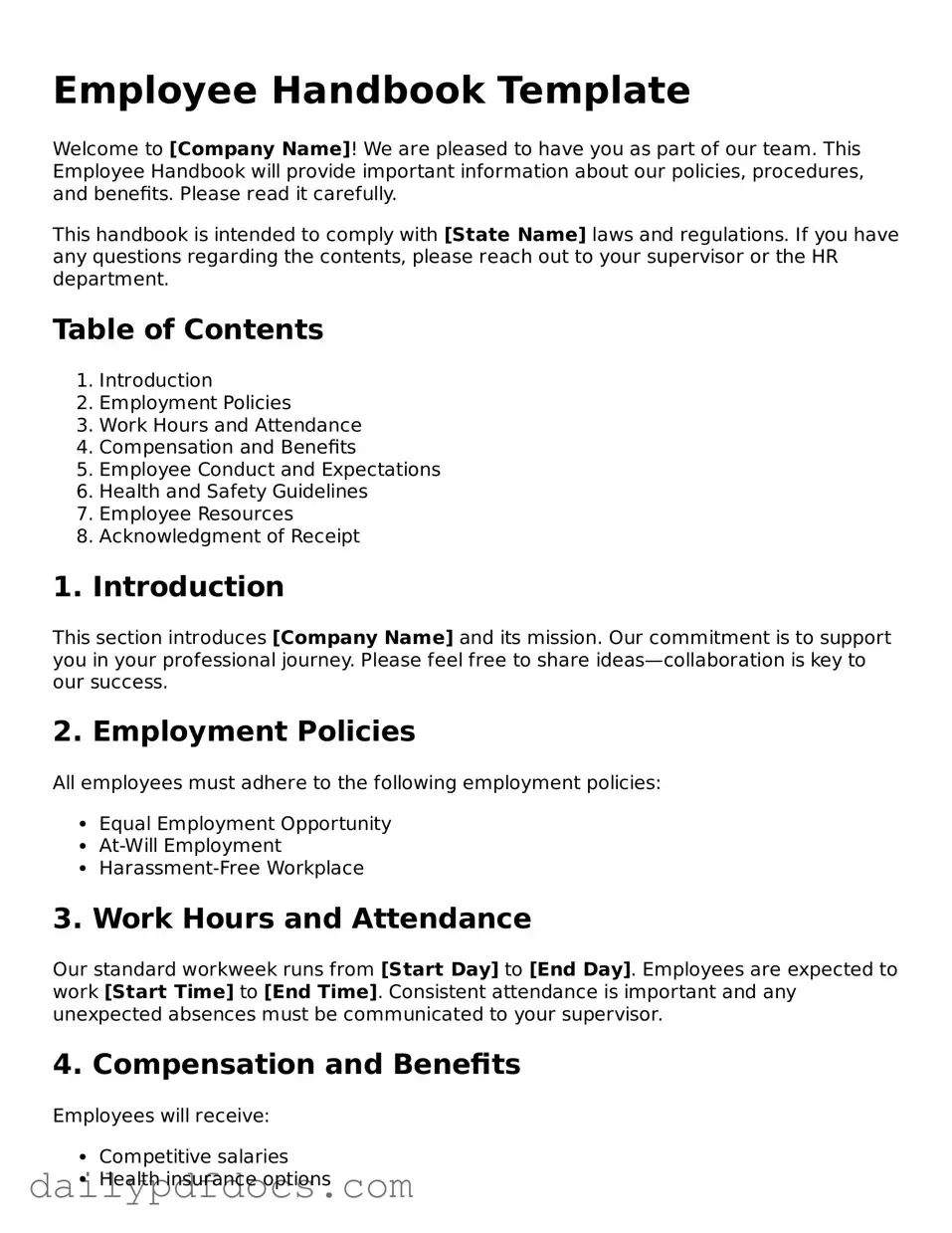Employee Handbook Template
Welcome to [Company Name]! We are pleased to have you as part of our team. This Employee Handbook will provide important information about our policies, procedures, and benefits. Please read it carefully.
This handbook is intended to comply with [State Name] laws and regulations. If you have any questions regarding the contents, please reach out to your supervisor or the HR department.
Table of Contents
- Introduction
- Employment Policies
- Work Hours and Attendance
- Compensation and Benefits
- Employee Conduct and Expectations
- Health and Safety Guidelines
- Employee Resources
- Acknowledgment of Receipt
1. Introduction
This section introduces [Company Name] and its mission. Our commitment is to support you in your professional journey. Please feel free to share ideas—collaboration is key to our success.
2. Employment Policies
All employees must adhere to the following employment policies:
- Equal Employment Opportunity
- At-Will Employment
- Harassment-Free Workplace
3. Work Hours and Attendance
Our standard workweek runs from [Start Day] to [End Day]. Employees are expected to work [Start Time] to [End Time]. Consistent attendance is important and any unexpected absences must be communicated to your supervisor.
4. Compensation and Benefits
Employees will receive:
- Competitive salaries
- Health insurance options
- Retirement savings plans
- Paid time off
5. Employee Conduct and Expectations
Employees are expected to maintain a professional demeanor at all times. This includes:
- Respecting colleagues and clients
- Adhering to company policies
- Maintaining confidentiality
6. Health and Safety Guidelines
Your safety is a priority. Please familiarize yourself with the following guidelines:
- Report any unsafe conditions
- Know emergency procedures
- Use safety equipment as required
7. Employee Resources
If you need assistance, various resources are available:
- Human Resources Department
- Mental health support services
- Professional development programs
8. Acknowledgment of Receipt
By signing below, you acknowledge that you have received and read the Employee Handbook for [Company Name]. You agree to adhere to the policies outlined herein.
__________________________ [Employee Name]
Date: _____________________
